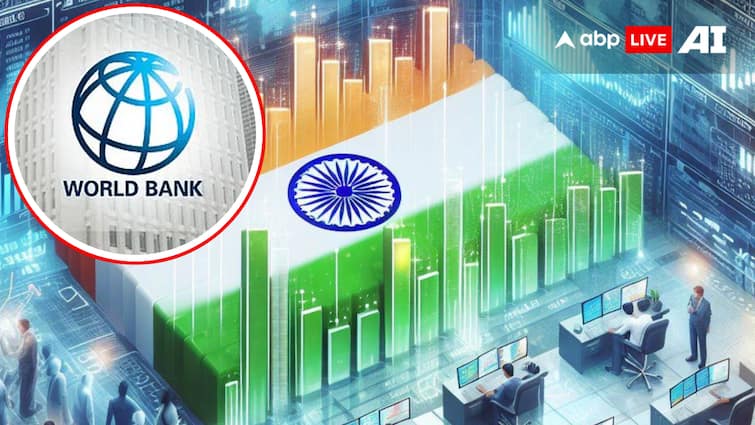World Bank Report: The World Bank has retained India’s financial growth rate of financial year 2025-26 at 6.3 per cent in its latest Global Economic Prospects report. In April, the bank reduced this estimate from 6.7 per cent to 6.3 per cent. Globally rising trade tension and policy uncertainty have been described as the main reason for this.
The shadow of recession on global economy
According to the report, the global growth rate is estimated to be just 2.3 per cent this year due to increasing trade related and policy ambiguity, which is the slowest speed after 2008 (if global obstacles are abandoned). This estimate was 2.7 percent in January. The World Bank warned that if no concrete steps are taken early, then there may be a profound impact on the standard of human living.
India’s latest performance and RBI’s attitude
Although India’s GDP growth stood at 7.4 per cent in the fourth quarter (Q4), the entire financial year FY25 increased to the rate of 6.5 per cent in total, which is the slowest growth after the Kovid period. Despite this, the Monetary Policy Committee of the Reserve Bank of India (RBI) has maintained GDP growth at 6.5 per cent for FY26, but has remained concerned about business instability, especially with US President Donald Trump’s new tariff policy.
New direction of Indo-US trade relations
America remained India’s largest trading partner for the fourth consecutive year. In 2024-25, the trade figure between the two countries reached $ 131.84 billion. America was a participant in India’s 18 per cent exports, 6.22 per cent imports and 10.73 per cent of the total merchandise trade. India also got a trade surplus of $ 41.18 billion with the US. The two countries are targeting to take this trade up to $ 500 billion by 2030.
What does India want and what America wants?
India wants America to reduce import duty on labor-based items like its textile, gem-jewelry, leather, textiles, plastic, chemicals, shrimp, oil seeds, grapes and bananas.
At the same time, the US wants India to give exemption in duty on electric vehicles, petrochemicals, alcohol, dairy, apples, nuts and genetically modified (GM) crops. Although India is still cautious about the import of GM crops, it is seen ready for the import of non-GM products such as alpha-alpha He (one type of animal feed).
Tariff War and 90 Day Peace
On April 10, the US postponed the additional tariff on Indian products for 90 days, which will remain in effect till 9 July. It is considered an attempt to create a positive atmosphere in business talks. Earlier on April 2, the US implemented a new tariff on products coming from about 60 countries, which also affected India. Under this decision, 26 percent additional fee was imposed on industrial metals like seafood and steel from India.
Both challenge and opportunity for India
India’s economic condition is currently looking stable, but the changing policies in global trade and questions arising with big partners like America will decide the direction of the economy in the coming months. If the trade agreement between India and the US grows in a positive direction, then it can become a big opportunity for Indian industries, especially when economies around the world are struggling with the possibility of recession.
Also read: How this multibagger stock fell 90 percent in a single day, investor shocked, understand what is the whole matter

